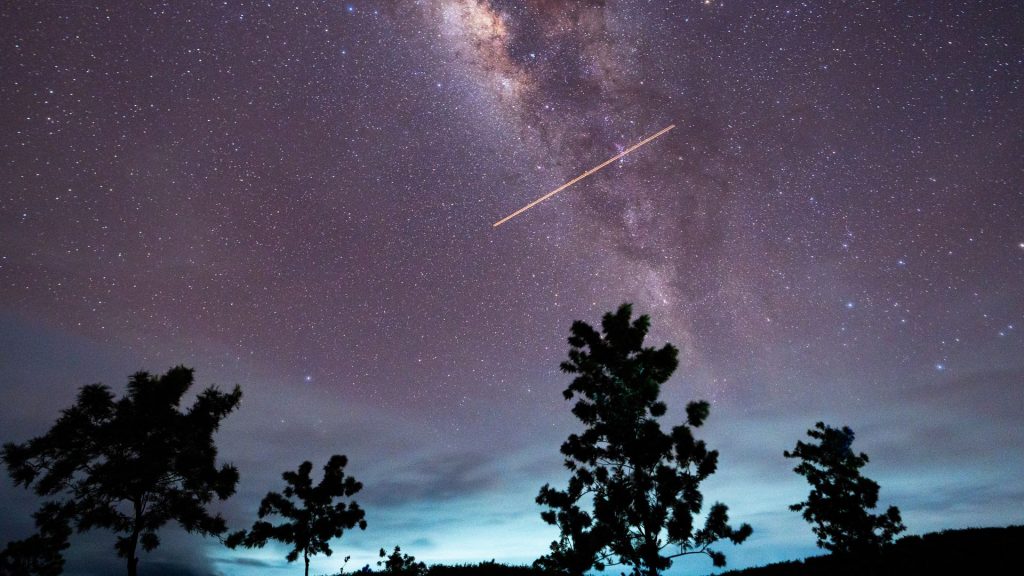It’s a bird, it’s a plane, it’s the Eta Aquarids meteor shower!

Over the next few weeks, the night sky will be alight with meteor showers known as the Eta Aquarids, culminating in a dazzling peak display on Tuesday morning, May 6. This meteor shower is an annual event that occurs when the Earth crosses the path of debris left by Halley’s comet, which flies by our planet once every 76 years.
When is the best time to catch the Eta Aquarids?
While meteor viewing will be possible until May 28, the peak Eta Aquarids viewing period will be late Monday, May 5, into the predawn hours of Tuesday, when stargazers can expect upwards of 50 meteors per hour, depending on location –– though visibility will be slightly reduced due to a two-thirds full moon.
The best viewing conditions for Eta Aquarids can be found in the Southern Hemisphere, but meteors will be visible across the globe. The American Meteor Society reports that the celestial spectacle can produce up to 50 meteors per hour in the Southern Hemisphere, while North America, Europe and Asia will be treated to 10 to 30 per hour.
Telescopes and other high-tech equipment aren’t necessary to enjoy the show. All you need is a quiet place away from artificial light and ideally, a less than full moon. NASA suggests bringing along a sleeping bag, blanket or lawn chair, lying flat on your back with your feet facing east, and “taking in as much of the sky as possible.”
Likewise, viewing increases the longer you watch, as our eyes adjust to the night sky –– so keep the blue glow of your phone tucked away to maximize your viewing experience.
What is a meteor shower?
Meteor showers occur several times a year when the Earth orbits the sun and cruises through debris paths left by previous comets. Pieces of debris, moving at astronomically high rates of speed, are slowed down by Earth’s atmosphere, become very hot and eventually burn up, creating a fiery trail.
According to AccuWeather, the debris is “often no larger than a pebble or grain of sand,” but “burn incredibly bright as they enter the planet’s atmosphere to create a ‘shooting star.'”





